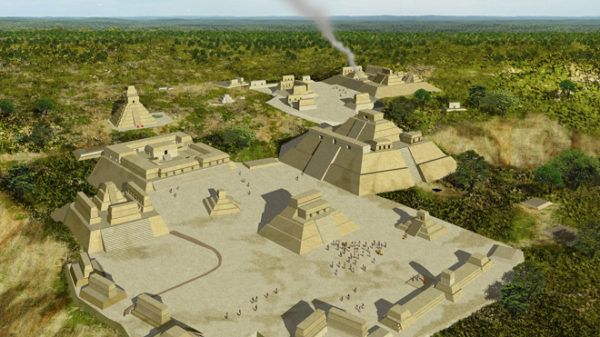In recent weeks, archeologists have found two tombs in Guatemala that have “miraculously” escaped the notice of looters, and the contents could well shake up everything we know about how the Mayan empire worked, according to Fox News Latino.
The tombs were found in the classical Mayan site of Holmul, about 300 miles north of Guatemala City, in the province of El Petén near the border with Belize. One of the artifacts inside – a jade necklace – bore the symbol of a distant king, suggesting that systems of vassalage and patronage spanned hundreds of miles.
“We never suspected until now how the Mayan super-state operated,” Francisco Estrada-Belli, a Tulane University research assistant professor directing excavations at Holmul, told Fox News Latino. “This gives us a unique glimpse, looking at it not from the center but from the margins.”
The tombs date to 650 to 700 A.D., some 800 years before Europeans arrived in the Americas, and a time when the Mayan culture reached its peak before its descent into a mysterious collapse.

Reconstructed view of Holmul in the final phase of the Classic Period. (Image by J. Gonzalez, PACUNAM)
Both tombs contained the skeletons of middle-aged people. One had jade inlays in his or her teeth – a good indicator that the person was a member of the Holmul’s royalty.
Apart from the various ceramics and other objects made of bone, shell and jade were two items that are very suggestive.
One was a human tibia that had an inscription carved into it.
“A very, very rare find,” Estrada-Belli, who grew up in Guatemala and Italy, told the Guardian . “It could be from an ancestor or a captive of war.”
. “It could be from an ancestor or a captive of war.”
Such carved human bones have been found in the area before, including one in the nearby site of Tikal, about 25 miles west of Holmul, which bore the name and image of a captured warrior, the Guardian reported.
The other tomb, which was located in a different pyramid, contained a jade necklace bearing the symbol of the “Snake King,” the ruler of a dynasty that for much of the 700s controlled a large part of the Guatemalan jungle from Dzinbache, a city a hundred miles north of Holmul, in what is today Mexico.



